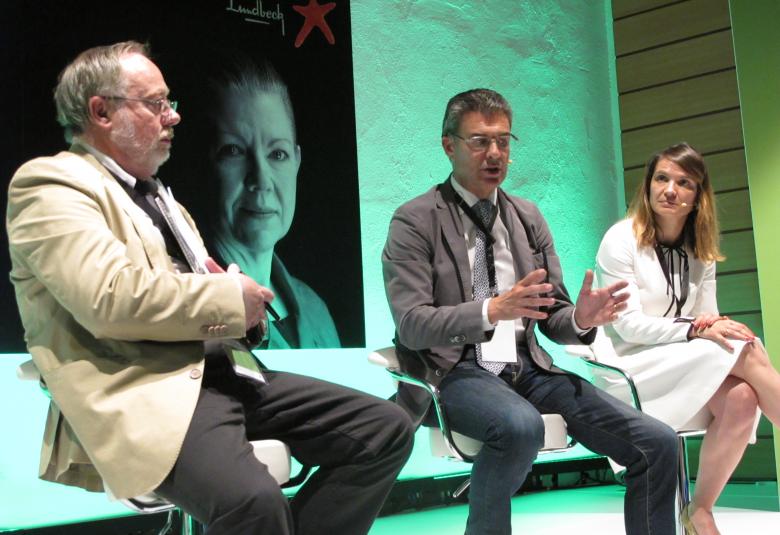Medication‑overuse headache (MOH) is a subset of chronic migraine (CM), which results from regular overuse of headache medication. It is a common and global problem, with a prevalence of 1 to 2%1, affecting up to 70% of people with CM2. Giorgio Lambru (Guy’s & St. Thomas’ NHS Foundation Trust, London, UK) discussed latest research findings into the pathophysiology of this important but poorly understood condition, and presented an effective management strategy including education, withdrawal and preventive treatment, in this EAN2021 satellite symposium.
Definition and impact of MOH
The current ICHD-3 criteria1 define MOH as:
- Headache occurring on 15 days/month in a patient with a pre-existing primary headache disorder
- Regular overuse for >3 months of ≥1 drugs that can be taken for acute and/or symptomatic treatment of headache
- Not better accounted for by another ICHD-3 diagnosis
Migraine is the primary headache disorder in up to 80%3. Patients overuse medication in an attempt to alleviate the symptoms of their primary headache, and an unfortunate cycle results whereby the treatment becomes the cause of the headaches.
MOH has a greater impact on patients and society than that of migraine alone
MOH is a major and growing public health concern2, with a greater impact on patients and society than that of migraine alone. It most commonly affects women in their 40s2, and prevalence decreases with older age2. Other associated factors include obesity, physical inactivity and smoking4.
What is the cause of MOH?
There are functional and structural changes in the central nervous system
The pathophysiology of MOH is complex and only partly understood. Studies have shown functional and structural changes in the central nervous system5. Candidate polymorphic gene variants are being explored, and proposed mechanisms include altered neurotransmitter metabolism and upregulation of vasoactive and proinflammatory mediators (eg calcitonin gene‑related peptide [CGRP])5.
Prevention through education
MOH is preventable, and requires increased awareness in the general population, and all healthcare professionals dealing with patients with headaches. Only 8% of patients know that overuse of all types of headache medications can lead to the development of MOH6.
MOH is preventable and requires increased awareness
Education and counselling, to limit future acute medication use, can be effective in patients with simple MOH, but is usually not sufficient in those patients with more complex MOH4. This includes opioid/tranquiliser/barbiturate overuse, and those with behavioural and co-morbid psychiatric conditions.
Managing overuse drug withdrawal
If education is not effective then the next step is withdrawal from the overused drugs4, to restore an episodic pattern of headache. There is considerable debate on mode of withdrawal and use of bridging treatments4. Drug intake can generally be abruptly terminated in patients overusing simple analgesics/ergots/triptans, but slow tapering may be needed in those on opioids/barbiturates/tranquilisers4. Patients should be warned they may feel worse before they feel better.
Success rate for withdrawal are 50 to 70%
Withdrawal can be performed in an outpatient or inpatient setting, depending on the particular case4. Those with more complex MOH may need a multidisciplinary team, including neurologist/pain specialist and behavioural psychologist. Success rates are 50 to 70%4, with higher relapse rates in those with opioid overuse, and robust medium- to long-term follow‑up plans are important.
Preventive medication can be highly effective
Preventive plus withdrawal treatment is more effective than either alone
Preventive therapy should be offered alongside withdrawal, as this is more effective than either approach alone. Carlsen et al7 demonstrated that MOH cure was increased by 30% (relative risk 1.3; 1.1, 1.6) with withdrawal plus preventive compared to preventive alone (p=0.03), although all three strategies were effective, with headache days/month reduced by 12.3 in combined, 9.9 in preventive and 8.5 in withdrawal groups.
Educational financial support for this Satellite symposium was provided by Lundbeck.
Our correspondent’s highlights from the symposium are meant as a fair representation of the scientific content presented. The views and opinions expressed on this page do not necessarily reflect those of Lundbeck.




